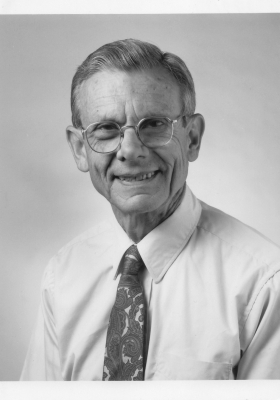 Lasting Memories
Lasting Memories

Charles Whitcher
March 28, 1923-Oct. 13, 2014
Stanford, California
Charles "Chuck" Whitcher, MD, who trained a generation of anesthesiologists at Stanford School of Medicine for 29 years, died at Stanford Hospital on Oct. 13, following a stroke. An emeritus professor of anesthesia, he was 91.
Born on March 28, 1923, in Santa Barbara, he attended Oberlin College as an undergraduate and then earned an MD from the University of Buffalo in 1949. After a two-year stint in the Army, he completed residencies in anesthesia at the University of North Carolina and Duke University.
With the opening of the new medical school on the Stanford campus in 1961, he joined the faculty as an assistant professor of anesthesia as the fourth member of the department. At that time, there were four ECG machines for 14 operating rooms, and those four machines were infrequently used. Precordial stethoscopes were commonly used, a new monitoring device for him at the time. His early work in physiologic measurement and recording in anesthetized patients inspired others to become anesthesiologists and later join the faculty. He was devoted to resident education and highly regarded as an educator and mentor, receiving the Resident Teacher of the Year Award in 1978.
When he was promoted from assistant professor to associate clinical professor of anesthesia in 1966, he became the first clinical professor in the department, in recognition of his dedication as a clinician. He provided anesthesia for Norman Shumway's patients on many occasions.
Early in his career at Stanford, he conducted research including a spectral analysis of Kortkoff sounds and distortion of sounds by stethoscopes during blood pressure measurement. He recruited engineering students to assist with the development of innovative methods of patient monitoring. He developed a special interest in pulse oximetry, an innovative monitoring technique at the time. The pulse oximeter ?- much smaller and lighter ?- is now used worldwide and changed patient care. During the 1970s he served as part of a multidisciplinary team that conducted pioneering work on the effects of occupational exposure to anesthetics.
Towards the end of his career, he became a fervent advocate of compassionate end-of-life care and was active in the Death with Dignity movement. Following his retirement in 1990, he became active as a member of Stanford residential community, serving on the Board of Directors of Stanford Campus Residential Leaseholders and developed a keen interest in community emergency preparedness.
He was able to devote time to his extensive collection of antique farm machinery that he maintained at his campus home, including numerous antique tractors and a horse drawn grader said to have been used on Leland Stanford's Horse farm. He, together with close friends in the "old iron" community, set a new standard for the restoration of old farm equipment and raised the bar for all sharing his passion.
He had a respect for the dignity of life, and a strong belief in independence, self-sufficiency and hard work. He was able to create rapport with people from all different walks of life, and to give them support and encouragement whenever they needed it. He will be missed.
He is survived by his wife, Mary Lue Eiche Whitcher; his children, Bruce Whitcher, DDS, of Templeton, California, Sarah Chenkin, Ph.D., of Swarthmore, Pennsylvania, and Douglas Whitcher, Ph.D., of Winterthur, Switzerland; stepchildren, Greg Aitken of Eugene, Oregon, and Katy Eiche, of British Columbia, Canada; and eight grandchildren. He was preceded in death by his son, David.
Dec. 2, 2014
Yes